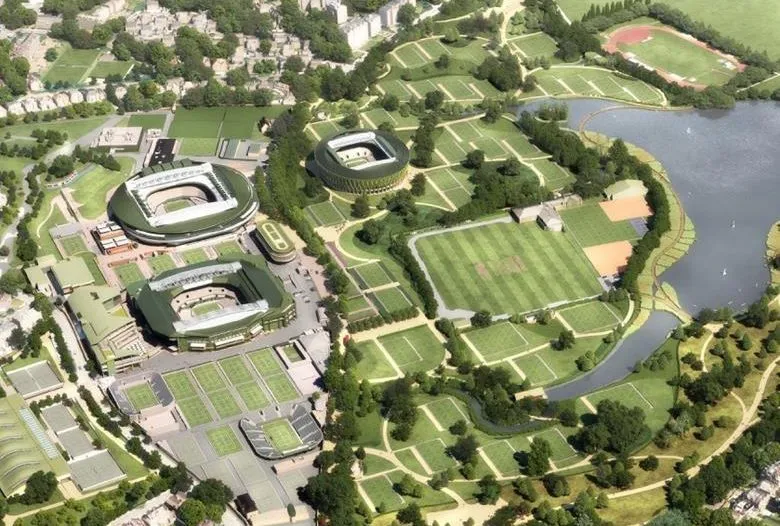The All England Lawn Tennis Club (AELTC) has secured a crucial victory in its long-running effort to expand Wimbledon’s footprint. After years of resistance from local groups, the UK’s High Court has ruled in favor of the AELTC’s £200 million redevelopment of the adjacent Wimbledon Park site — setting the stage for one of the most significant venue transformations in modern tennis.
A 21st Century Expansion for a Centuries-Old Icon
At the heart of the proposal is the transformation of the historic Wimbledon Park Golf Club site — acquired by the AELTC in 2018 — into a new, expansive tennis precinct. The plans include 39 new grass courts and a new 8,000-seat show court that will significantly expand capacity during both the qualifying rounds and the main tournament fortnight.
Once completed, the development is expected to allow 10,000 more fans per day to attend the early qualifying rounds and boost total daily visitor numbers to around 50,000 during the main event.
Legal Challenge Overruled
The legal dispute, brought forward by local campaigners from Save Wimbledon Park (SWP), centered on land-use restrictions stemming from covenants dating back to the 1990s and concerns over environmental and heritage damage. However, in a pivotal ruling, the High Court concluded that the decision to approve the development was a “rational planning judgement,” effectively clearing the way for AELTC to proceed.
The ruling reinforces the primacy of public interest-led urban planning, particularly when major cultural and economic assets like Wimbledon are involved.
Why This Matters: Venue Development, Green Belt Strategy, and Sporting Futures
This case illustrates the rising tension between preserving greenbelt areas and evolving iconic sports venues into global-scale destinations. Wimbledon — unlike many Grand Slam counterparts — has historically operated with limited space, with qualifying matches held off-site at Roehampton.
The expanded venue will not only consolidate all competition within a single campus but also future-proof Wimbledon against rising demand, broadcast requirements, and commercial expectations.
Strategic Learnings for Cities and Sports Organisations
- Unified Campus Strategy: AELTC’s model shows how consolidating operations, qualifying rounds, and fan engagement within a single precinct can elevate operational efficiency and brand equity.
- Heritage Meets Innovation: Successfully transforming a listed heritage site while receiving support from environmental agencies (including Natural England and the London Wildlife Trust) highlights the importance of early and broad stakeholder engagement.
- Planning Precedent: The ruling could serve as a blueprint for similar greenbelt-related developments across the UK — balancing civic heritage with the growing economic and global relevance of elite sport.
Next Steps: Still Not Over
Despite the High Court decision, opposition remains. SWP has signaled its intent to appeal, citing broader implications for public green spaces across the UK. Nonetheless, the AELTC now holds a legal and political mandate to proceed.
Chairwoman Deborah Jevans noted that thousands of local residents had engaged with the Club’s consultation process and that “the vast majority” now support the initiative.
A Defining Move in the Global Venue Race
As cities and sports organisations rethink their venue ecosystems, Wimbledon’s expansion underlines a clear strategic direction: invest in legacy, but build for the next century. With planning approval secured and construction expected to follow, London reaffirms its place not only as a capital of sport — but as a leader in sport-led urban regeneration.
—
365247 Media Commentary:
This isn’t just a tennis project — it’s a masterclass in leveraging heritage, civic engagement, and planning law to future-proof a globally iconic sports brand. Wimbledon is no longer just a tournament; it’s evolving into a year-round, multi-format campus for tennis and tourism.
IMAGE: Wimbledon.com


